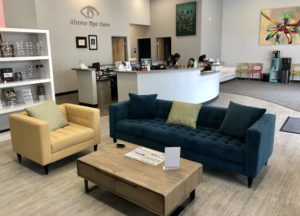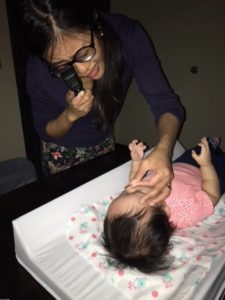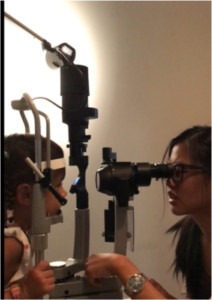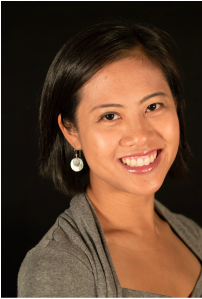July 15, 2021
By Melanie Frogozo, OD, FAAO, Alamo Eye Care , San Antonio, Texas
To give children the greatest chance of having the shortest axial length/lowest prescription with the fewest long-term health risks, eye care professionals must start myopia management from a very young age.

Dr. Frogozo’s practice: Alamo Eye Care, San Antonio, TX
When I first began my career in the eye care industry, I worked in corporate optometry in Kansas City. After a few years, I realized that I must expand my skill set because I referred out all of my patients except my contact lens patients. My goal was to provide all of my patients with the highest quality of care, so I needed to act.
I completed a residency in cornea and contact lenses, and though myopia management wasn’t yet as popular as it is today, I was introduced to the idea of treating patients with orthokeratology. A few years after my residency, I bought a small practice in my home state and grew a robust pediatric patient base. Though I started primarily doing comprehensive eye care, and my passion was in specialty contact lenses, the need for myopia management services became apparent to me. Also, if you provide specialty contact lenses, you really can’t separate myopia management – the options are here. It’s our responsibility as eye care professionals to utilize them to offer children the best chance at slowing their myopia progression.
As a high myope myself, and as someone who has a myopic child and is married to a myope, I understand the degradation of vision that comes with myopia. To give children the greatest chance of having the shortest axial length/lowest prescription with the fewest long-term health risks, eye care professionals must start myopia management from a very young age.
Creating a Treatment Plan
When evaluating a myopia patient, some of the factors we focus on before starting a treatment plan are the family’s motivation, general lifestyle, and the child’s age. For example, for younger patients, they’re typically not ideal contact lens candidates, so I’ll usually start them on low-dose atropine. As the patient becomes more mature and the parent feels more comfortable, we can adapt the treatment plan to include other modalities. The youngest patient I’ve prescribed OrthoK to was seven, and it’s usually around that age when I begin to introduce the idea of OrthoK or soft contact lenses plus low-dose atropine. If the patient has an active lifestyle, we try to get them into contact lenses, but if they’re in activities such as swimming or others that could hinder contact lens wear, we consider OrthoK.

We also need to take the parents and the children into consideration when deciding on a treatment plan. If a parent is on board with one treatment method, but a child is more hesitant, we’ll consider something that the parent can be more involved with, either OrthoK or atropine. With soft contact lenses, the child has to adopt some level of responsibility. If they’re at the playground and some dust gets kicked up into their eye, they have to be able to pull that lens out quickly and throw it away. Their parents aren’t always going to be around for such issues, so if the child has no interest in taking on that responsibility, we’ll have to consider other kinds of treatments.
A big part of this comes down to interviewing the parents and learning about their schedules, what they do for fun, how their children spend their time, and whether or not the parents are willing to contribute. It doesn’t necessarily require a formal screening or questionnaire, but instead, it could be as simple as making casual conversation. You pick up things during the exam when you’re naturally talking and asking about weekend plans or what the parents do in their downtime. My technicians do a great job communicating with parents to create an environment where parents feel comfortable sharing. Their work ultimately helps me a great deal when it comes time to choose a treatment plan.
Starting Myopia Management Early
My experience with my daughter and my experience in the eye care industry have shown me the benefits of starting myopia management as early as possible. I started my daughter on low-dose atropine and bifocal spectacle lenses when she was three years old because I wanted to try everything. I quickly learned that the glasses didn’t work out very well; she’d pull them off constantly while she was at daycare, so I knew that wouldn’t work for us. I kept her on low-dose atropine, and we found a system that worked for us.

Dr. Frogozo strongly believes in starting myopia management treatments from a young age.
When implementing these treatments with young kids, the biggest takeaway is the repetition of doing the same thing every day. Children are creatures of habit. You have to do something at the same time every day because if you only do it once a week, they’re never going to remember, and then they’re going to get mad at you when it’s time to put in drops or lenses. The consistency lets them know that it’s time for the treatment, and they have a better understanding of what to expect and what’s happening. My goal with my patients is to push compliance for an everyday modality — regardless of what that modality is. If you only put in contact lenses once a week, you’re going to forget sometimes, and then we’re not going to see the progress that we want to see with these treatments. Working through this with my daughter has helped me communicate with parents the importance of compliance with these treatments. You can work with kids from a very young age, but they have to understand the schedule.
Parents and eye care professionals need to know that it’s possible to treat young children. We should be starting children on myopia management treatments as early as possible. Other eye care providers were sometimes surprised when I started my daughter on low-dose atropine at three or started patients on contact lenses at seven. Ultimately, where there’s a will, there’s a way. The earlier we start these treatments, the better the outcomes are for children.
One way it’s practical to start these treatments at such a young age is by understanding how much kids trust their parents. Sometimes, being in the office can be scary, especially when patients are that young. So, for example, with contact lenses, we don’t always do lens insertion and removal training in the office. If parents wear contact lenses and show interest in being involved, I release the patients and trust that the parents will troubleshoot the process at home, where their children are more comfortable. I’m always available to answer questions and monitor their progress, but being guided by someone the children trust can help make this process easier and make children more compliant.
The Future of Myopia Management
Another reason I’m so passionate about starting children with myopia management treatments so early is that the most common referrals I get are already highly myopic children. Many practitioners either don’t know how to offer myopia management treatments to their patients, or they wait for further progression. That’s when they get referred to a myopia management specialist, and even though we’ll start a treatment plan — because doing something is better than doing nothing — we know that patient isn’t going to react the same as a patient who started the same treatment as a low myope.
My hope for the future is that practitioners understand the importance of detecting myopia early. We need to utilize the tools available to us to diagnose myopia and then manage it appropriately. If you can’t manage it, refer your patient to a colleague who can help as soon as possible. Being myopic, you’re already at risk for all of these concerns that only get worse as you mature. As eye care professionals, we need to do our parts to ensure that detection and treatment become the norm.

Melanie Frogozo, OD, FAAO, is the owner of Alamo Eye Care in San Antonio, Texas, where she directs the Contact Lens Institute.













